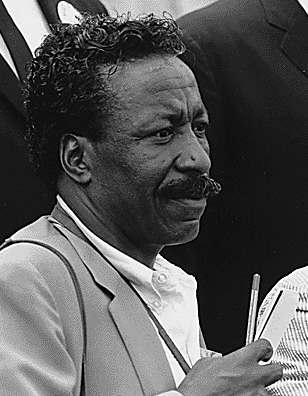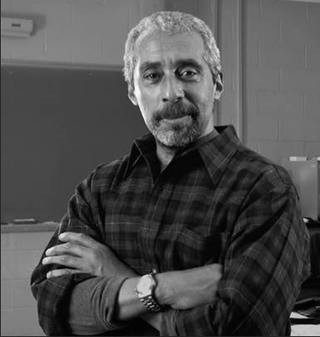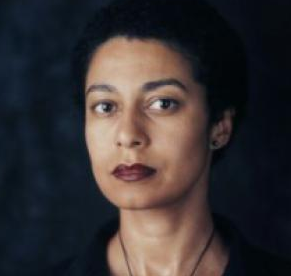Related Research Articles

Gordon Roger Alexander Buchanan Parks was an American photographer, composer, author, poet, and film director, who became prominent in U.S. documentary photojournalism in the 1940s through 1970s—particularly in issues of civil rights, poverty and African Americans—and in glamour photography. He is best remembered for his iconic photos of poor Americans during the 1940s, for his photographic essays for Life magazine, and as the director of the films Shaft, Shaft's Big Score and the semiautobiographical The Learning Tree.

Nicholas David Gordon Knight is a British fashion photographer and founder and director of SHOWstudio.com. He is an honorary professor at University of the Arts London and was awarded an honorary Ph.D. by the same university. He has produced books of his work including retrospectives Nicknight (1994) and Nick Knight (2009). In 2016, Knight's 1992 campaign photograph for fashion brand Jil Sander was sold by Phillips auction house at the record-breaking price of HKD 2,360,000.
Malick Sidibé was a Malian photographer from a Fulani village in Soloba, who was noted for his black-and-white studies of popular culture in the 1960s in Bamako. Sidibé had a long and fruitful career as a photographer in Bamako, Mali, and was a well-known figure in his community. In 1994 he had his first exhibition outside of Mali and received much critical praise for his carefully composed portraits. Sidibé's work has since become well known and renowned on a global scale. His work was the subject of a number of publications and exhibited throughout Europe and the United States. In 2007, he received a Golden Lion for Lifetime Achievement at the Venice Biennale, becoming both the first photographer and the first African so recognized. Other awards he has received include a Hasselblad Award for photography in 2003, an International Center of Photography Infinity Award for Lifetime Achievement (2008), and a World Press Photo award (2010).
Jürgen Schadeberg was a German-born South African photographer and artist. He photographed key moments in South African history, including iconic photographs such as Nelson Mandela at Robben Island prison. He also lived, worked and taught in London and Spain, and photographed in many African countries.
Dawoud Bey is an American photographer, artist and educator known for his large-scale art photography and street photography portraits, including American adolescents in relation to their community, and other often marginalized subjects. In 2017, Bey was named a fellow and the recipient of a MacArthur Fellowship from the John D. and Catherine T. MacArthur Foundation and is regarded as one of the "most innovative and influential photographers of his generation".

Ronald "Charlie" Phillips, also known by the nickname "Smokey", is a Jamaican-born restaurateur, photographer, and documenter of black London. He is now best known for his photographs of Notting Hill during the period of West Indian migration to London; however, his subject matter has also included film stars and student protests, with his photographs having appeared in Stern, Harper’s Bazaar, Life and Vogue and in Italian and Swiss journals. Notable recent shows by Phillips include How Great Thou Art, "a sensitive photographic documentary of the social and emotional traditions that surround death in London's African Caribbean community".

Thomas Allen Harris is a critically acclaimed, interdisciplinary artist who explores family, identity, and spirituality in a participatory practice. Since 1990, Harris has remixed archives from multiple origins throughout his work, challenging hierarchy within historical narratives through the use of pioneering documentary and research methodologies that center vernacular image and collaboration. He is currently working on a new television show, Family Pictures USA, which takes a radical look at neighborhoods and cities of the United States through the lens of family photographs, collaborative performances, and personal testimony sourced from their communities..

Jules Allen is an American photographer, author, and educator. He is known for his photographs of African-American culture. He is an emeritus professor of Queensborough Community College of the City University of New York, where he has taught for two decades in the art and photography department.

Cambridge Jones is a British celebrity portrait photographer from Wales. His subjects, in a series of books and exhibitions, include hundreds of well-known actors and musicians.
Zanele Muholi is a South African artist and visual activist working in photography, video, and installation. Muholi's work focuses on race, gender and sexuality with a body of work that dates back to the early 2000s, documenting and celebrating the lives of South Africa's Black lesbian, gay, transgender, and intersex communities. Muholi is non-binary and uses they/them pronouns, explaining that "I'm just human".
Anthony Barboza is a photographer, historian, artist and writer. With roots originating from Cape Verde, and work that began in commercial art more than forty years ago, Barboza's artistic talents and successful career helped him to cross over and pursue his passions in the fine arts where he continues to contribute to the American art scene.
Pieter Hugo is a South African photographer who primarily works in portraiture. He lives in Cape Town.

Maud Sulter was a Scottish contemporary fine artist, photographer, writer, educator, feminist, cultural historian, and curator of Ghanaian heritage. She began her career as a writer and poet, becoming a visual artist not long afterwards. By the end of 1985 she had shown her artwork in three exhibitions and her first collection of poetry had been published. Sulter was known for her collaborations with other Black feminist scholars and activists, capturing the lives of Black people in Europe. She was a champion of the African-American sculptor Edmonia Lewis, and was fascinated by the Haitian-born French performer Jeanne Duval.
Samuel Fosso is a Cameroonian-born Nigerian photographer who has worked for most of his career in the Central African Republic. His work includes using self-portraits adopting a series of personas, often commenting on the history of Africa. One of his most famous works of art, and what he is best known for, is his "autoportraits" where he takes either himself or other more recognizable people and draws them in a style of popular culture or politics. He is recognized as one of Central Africa's leading contemporary artists.
George Hallett was a South African photographer known for images of South African exiles. His body of work captures much of the country's turbulent history through Apartheid and into the young democracy.
Gisèle Wulfsohn was a South African photographer. Wulfsohn was a newspaper, magazine, and freelance photographer specialising on portrait, education, health and gender issues. She was known for documenting various HIV/AIDS awareness campaigns. She died in 2011 from lung cancer.
Armet Francis is a Jamaican-born photographer and publisher who has lived in London since the 1950s. He has been documenting and chronicling the lives of people of the African diaspora for more than 40 years and his assignments have included work for The Times Magazine, The Sunday Times Supplement, BBC and Channel 4.
Dudley M. Brooks is the co-creator of Songs of My People African Americans: A Self-Portrait, a historic photo documentary of the world of African Americans, and he is currently the deputy director of photography for The Washington Post and photo editor for The Washington Post Magazine.

Ming Smith is an American photographer. She was the first African-American female photographer whose work was acquired by the Museum of Modern Art in New York City.
Liz Johnson Artur is a Ghanaian-Russian photographer based in London, England. Her work documents the lives of black people from across the African Diaspora. Her work strives to display and celebrate the normal, the vibrant and the subtle nuances of each of these people lives that she encounters. Johnson Artur works as a photojournalist and editorial photographer for various fashion magazines and record labels all over the world, as well as her independent artistic practice. Her monograph with Bierke Verlag was included in the "Best Photo Books 2016" list of The New York Times.
References
- 1 2 3 Hagen, Charles. "Review/Photography; 'Songs of My People,' A Black Self-Portrait." New York Times, October 9, 1992. Accessed August 7, 2009.
- ↑ Easter, Eric, D. Michael Cheers, and Dudley M. Brooks, editors. Songs of My People: African Americans, a Self-Portrait. Boston: Little, Brown, 1992. ISBN 0-316-10966-5
- 1 2 Downey, Maureen. "Photo Project Will Chronicle Breadth of Black Experience." The Atlanta Journal and The Atlanta Constitution, May 18, 1990.
- ↑ Mills, David. "Art - Faces of the Unsung People." Washington Post, February 15, 1992.
- ↑ Wayne, Renee Lucas. "An African-American Self-Portrait in Photos." Philadelphia Daily News, April 17, 1992.
- 1 2 Snow, Shauna. "Redressing the Balance - Photography: 'Songs of My People' is Designed to Contribute Toward Understanding... and Healing the City." Los Angeles Times, May 30, 1992. Accessed August 7, 2009.
- 1 2 University of Missouri. "Songs of My People: A Collection of Photographs from the Museum of Art and Archaeology." Archived 2010-06-01 at the Wayback Machine Accessed August 7, 2009.
- ↑ "Songs of My People". exhibition archives, 1990-1994. Retrieved 25 July 2011.